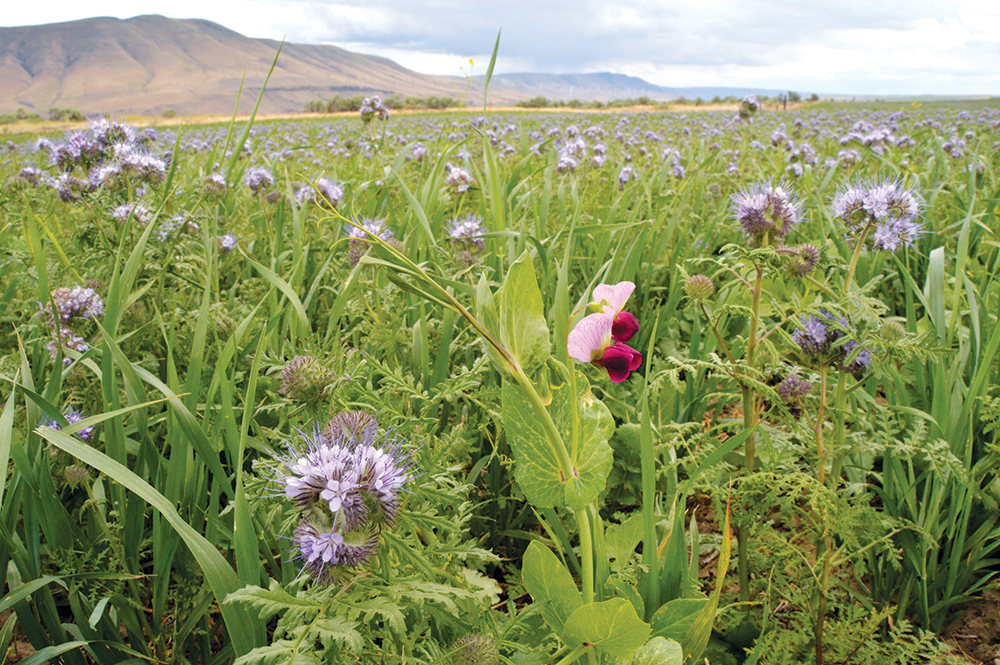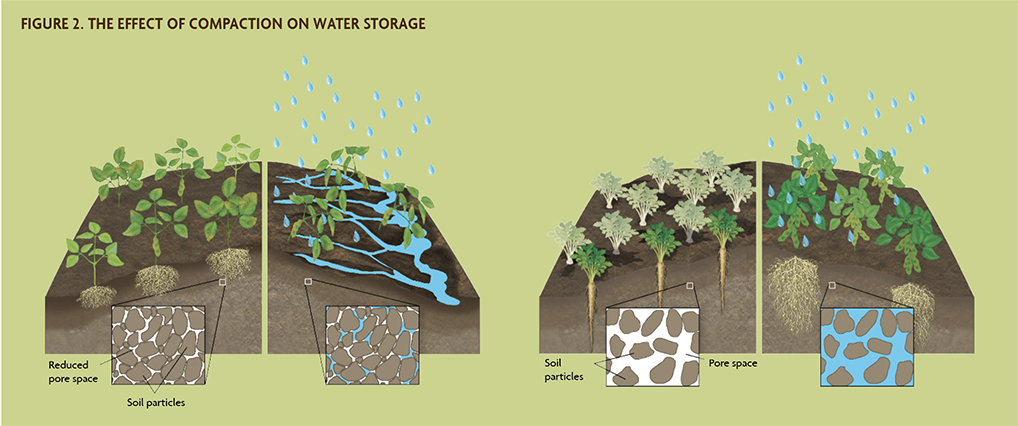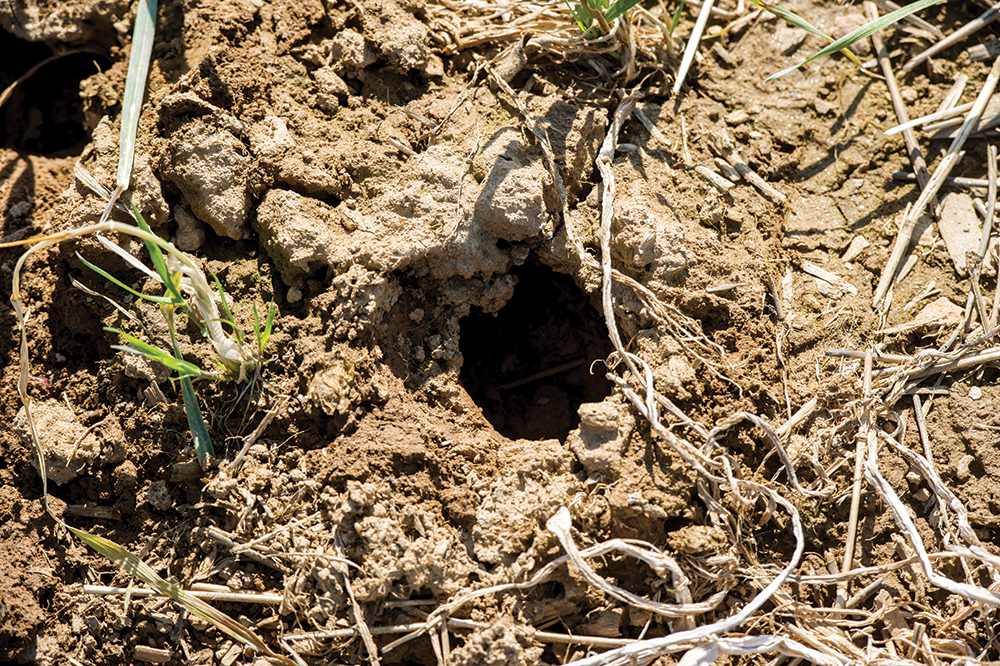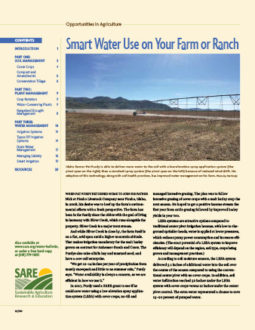
Cover crops, seeded between or amid cash crops, contribute a variety of conservation benefits for water and soil. For water, they offer a triple bonus. A living cover crop traps surface water. When killed and left on the surface, cover crop residue bumps up water infiltration and lessens both erosion and evaporation. When incorporated into soil, residue adds organic matter that boosts infiltration to the root zone.
Before choosing to test any cover crop species, first identify your needs and consider factors like your cropping system, climate, tillage options, planting window, soil type and more. Where water conservation is the goal, adding a grass into the rotation, either as a hay crop or forage, can improve soil aggregation, since the complex root system of grasses loosens soil.

Grasses like rye, wheat and sorghum-sudangrass produce biomass that, when terminated, provides soil coverage to reduce evaporation rates and supply organic matter. Tillage radish and its deep taproot are useful for breaking up compacted soils and improving water infiltration (Figure 2). Learn more about selecting and managing cover crops in Managing Cover Crops Profitably.
The conservation benefits of cover crops usually translate into higher yields, cost savings or both, especially when water is scarce. During the severe drought of 2012, some Midwestern and Western farmers who had planted cover crops found that corn yields were an average 9.6 percent higher than on fields where cover crops had not been planted. Soybean yields were 11.6 percent higher, as reported by farmers who participated in the six-year National Cover Crop Survey conducted by SARE, the Conservation Technology Information Center and other partners (view survey results at www.sare.org/covercropsurvey). Better yields were most likely due to cover crops providing ground cover, reducing evaporation and increasing available soil water for the crop.

In drought conditions, corn and soybean farmers can expect to recoup the cost of cover crops in a single year, according to an economic analysis of the National Cover Crop Survey found in the SARE report, Cover Crop Economics: Opportunities to Improve Your Bottom Line in Row Crops. Depending on how many years the farmer was using cover crops for before the onset of a drought (from one to five years), they can expect an average return on corn of $27.34–$110.45 per acre. The average return on soybeans is $41.69–$84.54 per acre.
In 2008, no-till farmer Keith Berns began experimenting with cover crops in dryland rotations of corn, soybeans and wheat on his Bladen, Neb., farm. This SARE-funded project revealed that some multi-species cover crop mixes conserved water as well as wheat stubble alone, and they resulted in higher yields of the following corn crop than stubble.
“Results of this project made us firm believers in cover crops.”
Keith Berns, Bladen, Neb.
Today, Berns and his brother Brian continue using diverse cover crop species on their 2,000-acre farm to increase organic matter and manage soil fertility. They also operate a thriving cover crop seed business. Moisture management remains both a focus and a challenge each spring as they make decisions about when to terminate cover crops and plant cash crops based on available moisture in the soil.
